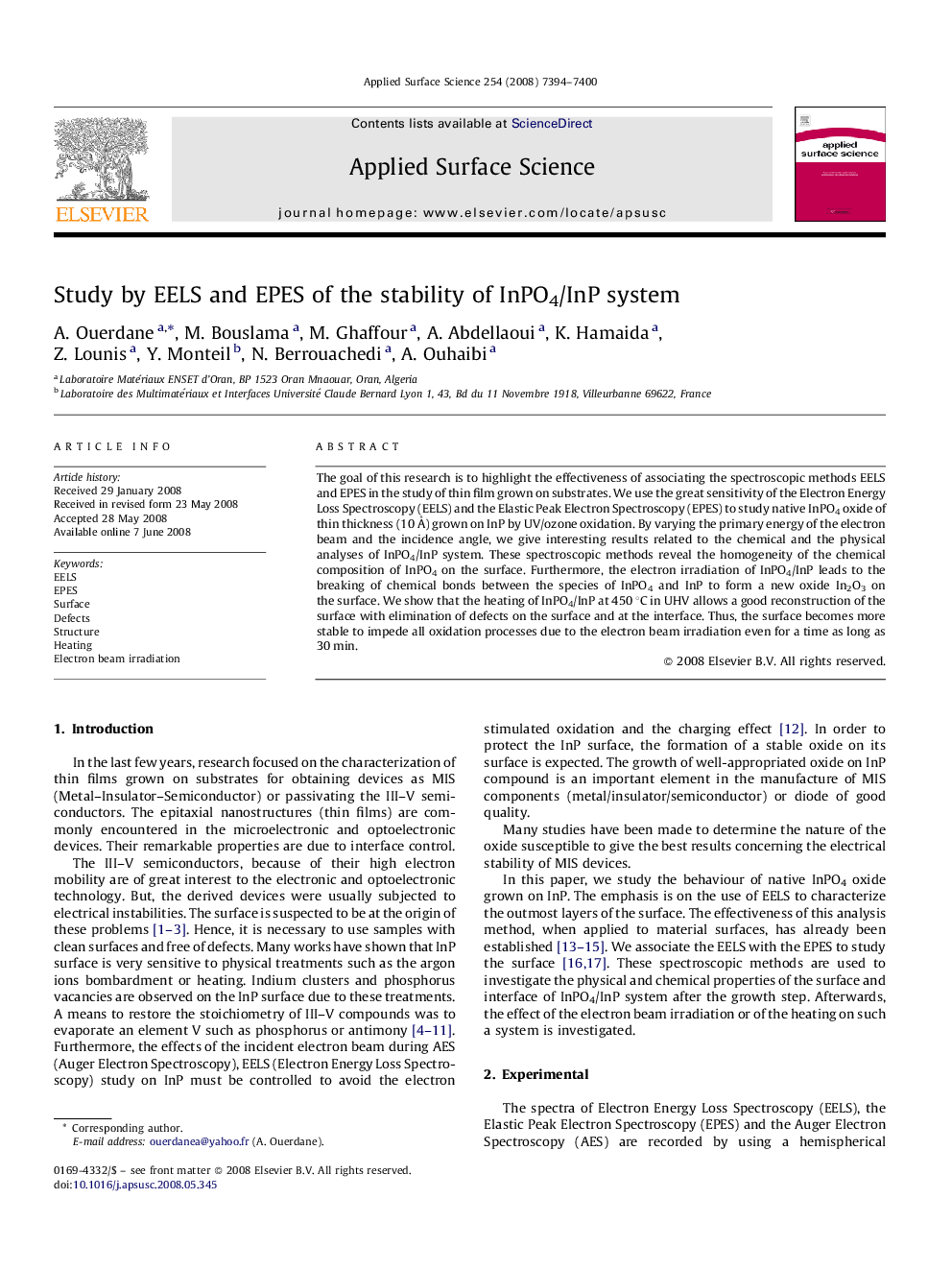| Article ID | Journal | Published Year | Pages | File Type |
|---|---|---|---|---|
| 5361101 | Applied Surface Science | 2008 | 7 Pages |
Abstract
The goal of this research is to highlight the effectiveness of associating the spectroscopic methods EELS and EPES in the study of thin film grown on substrates. We use the great sensitivity of the Electron Energy Loss Spectroscopy (EELS) and the Elastic Peak Electron Spectroscopy (EPES) to study native InPO4 oxide of thin thickness (10Â Ã
) grown on InP by UV/ozone oxidation. By varying the primary energy of the electron beam and the incidence angle, we give interesting results related to the chemical and the physical analyses of InPO4/InP system. These spectroscopic methods reveal the homogeneity of the chemical composition of InPO4 on the surface. Furthermore, the electron irradiation of InPO4/InP leads to the breaking of chemical bonds between the species of InPO4 and InP to form a new oxide In2O3 on the surface. We show that the heating of InPO4/InP at 450 °C in UHV allows a good reconstruction of the surface with elimination of defects on the surface and at the interface. Thus, the surface becomes more stable to impede all oxidation processes due to the electron beam irradiation even for a time as long as 30 min.
Related Topics
Physical Sciences and Engineering
Chemistry
Physical and Theoretical Chemistry
Authors
A. Ouerdane, M. Bouslama, M. Ghaffour, A. Abdellaoui, K. Hamaida, Z. Lounis, Y. Monteil, N. Berrouachedi, A. Ouhaibi,
